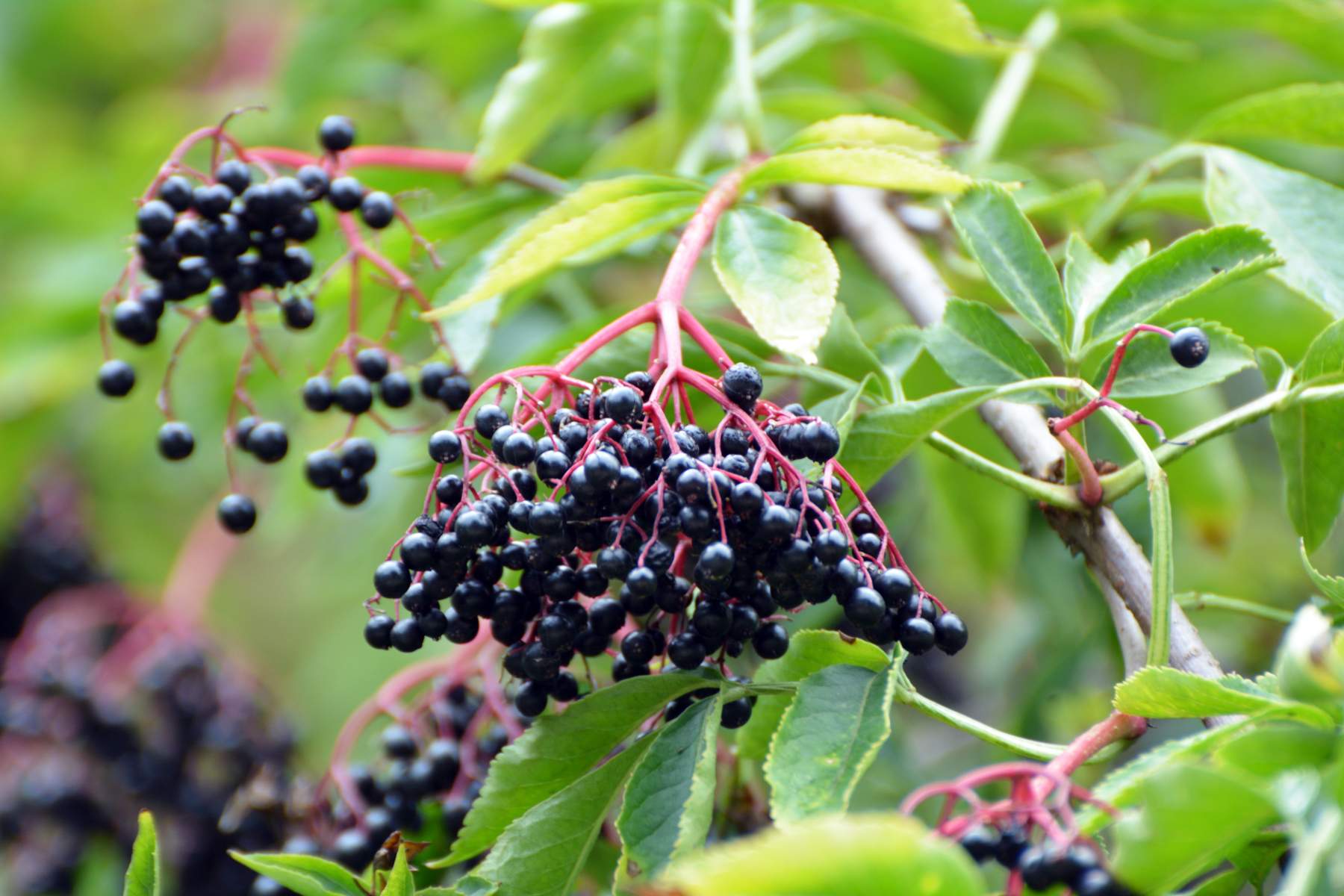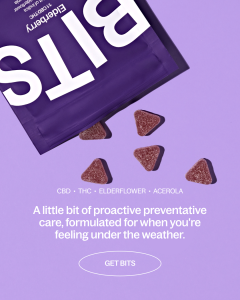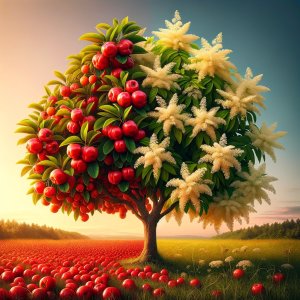
This is part of a series of articles on Wana Bits that explore the science behind the ingredients in the popular edible products.
As discussed previously, Cannabis is part of a food revolution. As we expand our appreciation of functional foods, we will turn our focus towards two plant products that are part of the Elderberry Wana bits. This product features a blend of the flower & berry from Elder trees and products from the fruit-bearing shrub known as acerola – alongside a 1:1 ratio of THC:CBD. Let’s take a look at these ingredients and see what they might be doing when combined with THC and CBD.

Elderberry and Elderflower (Sambucus Niger)
Elderberry and elderflower are not new ingredients. In many cultures throughout recorded history, the elder tree has been surrounded by folklore and was thought to ward off evil spirits. It was also believed to be inhabited by the “Elder Mother,” a spirit protector of the tree. Tribes indigenous to North America used both the flowers and fruit in beverages and for a range of medicinal purposes. The products of the Elder tree have garnered more attention in the past several years as consumers look for novel flavors, natural colorants, and natural ingredients to support health.
Elderberries have a long history of being used to make wines, syrups, pies, and jellies. Elderflowers are typically used as flavors in teas, infusions, syrups, and liquors, as they impart a delicate and distinct floral aroma. However, it’s important to note that you should not eat raw elderberries, or the leaves, stems, and seeds, which can contain toxic compounds – the plant must be cooked or processed appropriately before consumption.
The primary aroma constituents of elderflower include cis-rose oxide, nerol oxide, hotrienol, and nonanal. Linalool, alpha-terpineol, hexenal, and (Z)-3-hexenol contribute floral and grassy notes. Linalool and alpha-terpineol are often found in cannabis as well. Although many of these terpenes can also be found in the elderberry The main aroma compounds found in the berries include beta-damascenone, dihydroedulan, and phenylacetaldehyde, which are also found in roses, passionfruit, and chocolate, respectively.
Acerola (Malpighia emarginata)
Due to its tart flavor, acerola (aka barbados cherry) is often used in jams, jellies, juices, and smoothies, as well as in natural vitamin supplements. The Vitamin C powerhouse, known as acerola, does not appear much in folklore or mythology across cultures. So, it probably does not have any mystical or magical properties. Yet, there is evidence for traditional medicinal use, acerola has been associated with improvements for a variety of ailments, including liver disorders, dysentery, and coughs.

Acerola has been introduced into various parts of the world fairly recently. Its cherry or fruit is high in vitamin C and is valued in the modern world for its nutritional content. This nutritional content includes phenolic compounds such as flavonoids, stilbenes, and lignans. Researchers in Brazil identified 55 flavonoids and 76 phenolic compounds in total.
Acerola is associated with the treatment or prevention of the disease known as scurvy, which is caused by vitamin C deficiency. This plant and its products have a therapeutic potential as a preventative agent, potentially mitigating conditions running from heart disease, hardening of the arteries (i.e., atherosclerosis), blood clots, and cancer.
Cannabidiol (CBD)
Many people swear they feel the health benefits of CBD, while others feel nothing. Clinical studies using extraordinary high doses of CBD, have been shown to alleviate symptoms in pediatric epilepsy. But, just because you do not feel intoxicated from CBD does not mean that CBD does not have potential benefits or impacts on other drugs or compounds. CBD is associated with a potential to mitigate stress, anxiety, and inflammation – as well as helping to mitigate the psychoactive effects of THC.
Tetrahydrocannabinol (THC)
Every product containing THC should be taken with an appropriate amount of caution. If it is your first time trying a product, the golden rule is “start low, go slow.” Experts agree that you should not eat the’ whole dang bag’ in one sitting. If you are concerned about being sensitive to the effects of THC – consider taking a half or quarter piece of an edible, especially for your first time trying a new product that contains THC.
Taken Together – THC + CBD + Elderberry + Acerola
Integrating elderflower and acerola into products deliberately targets immune enhancement and anti-inflammatory action, offering a strategic approach to wellness. Elderflower, with its documented immune-strengthening and anti-inflammatory effects, pairs seamlessly with acerola’s rich vitamin C content, amplifying the immune support potential. This combination not only caters to those aiming to bolster their immune system and mitigate inflammation but also aligns with the broader trend of seeking natural health-boosting ingredients.
The 1:1 THC to CBD ratio further underscores this intention, leveraging CBD’s ability to counterbalance THC’s less desired effects. Recent research highlights an intriguing finding: participants experienced comparable levels of positive outcomes, such as euphoria and satisfaction, with a 1:1 THC:CBD blend as they did with THC alone, but with fewer adverse effects like paranoia and anxiety. This parity in positive experiences, achieved with lower THC levels in the presence of CBD, indicates that such blends not only enhance the overall experience but also offer a more efficient use of the active ingredients. This efficiency translates into less product consumption, which is not only cost-effective but also reduces the likelihood of tolerance buildup and the need for increased dosage over time.

This holistic approach, combining elder plant derivatives for their health benefits with a balanced cannabinoid ratio, reflects a nuanced understanding of plant synergy. It underscores a movement towards products that not only deliver desired effects more efficiently but do so in a way that supports overall health and reduces potential risks and costs associated with higher THC consumption.
Disclaimer: This article is intended for informational purposes only and does not constitute medical advice. Always consult a healthcare professional for medical diagnosis or treatment recommendations.

